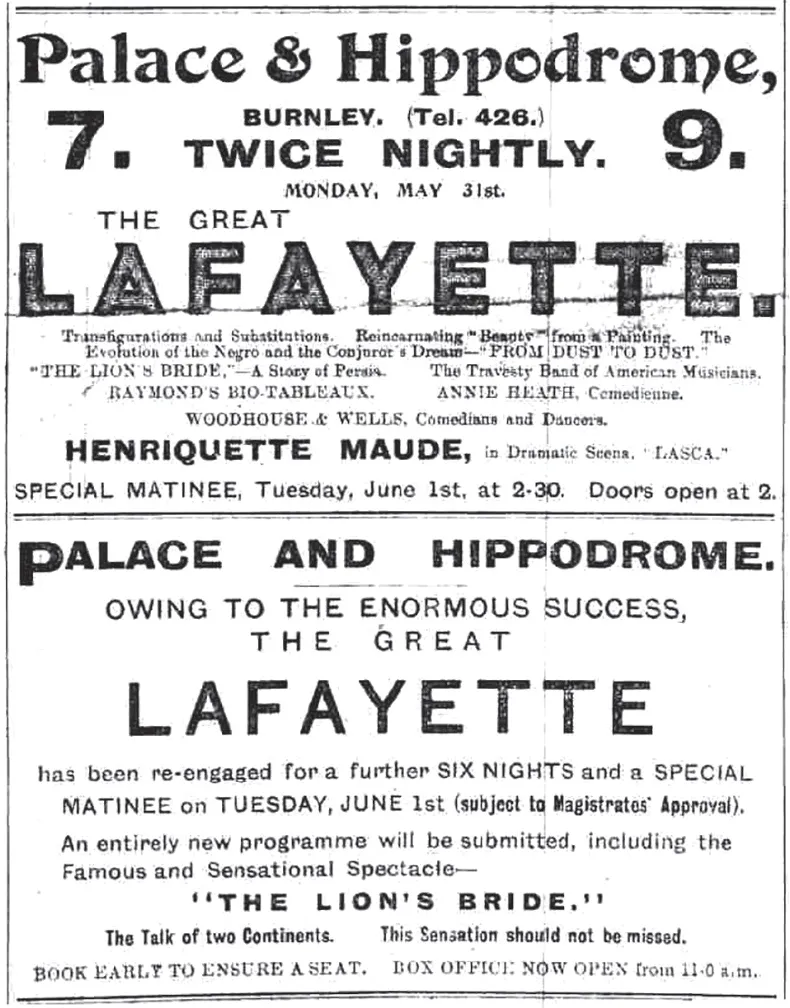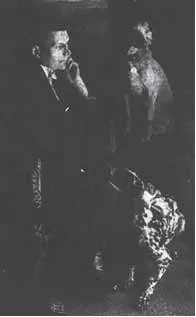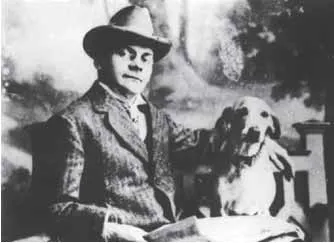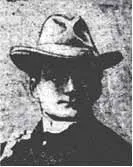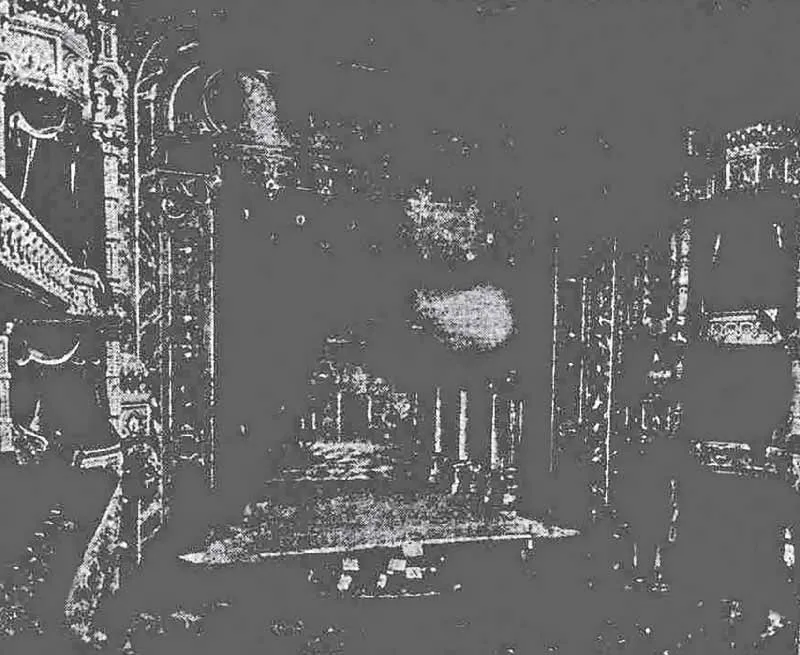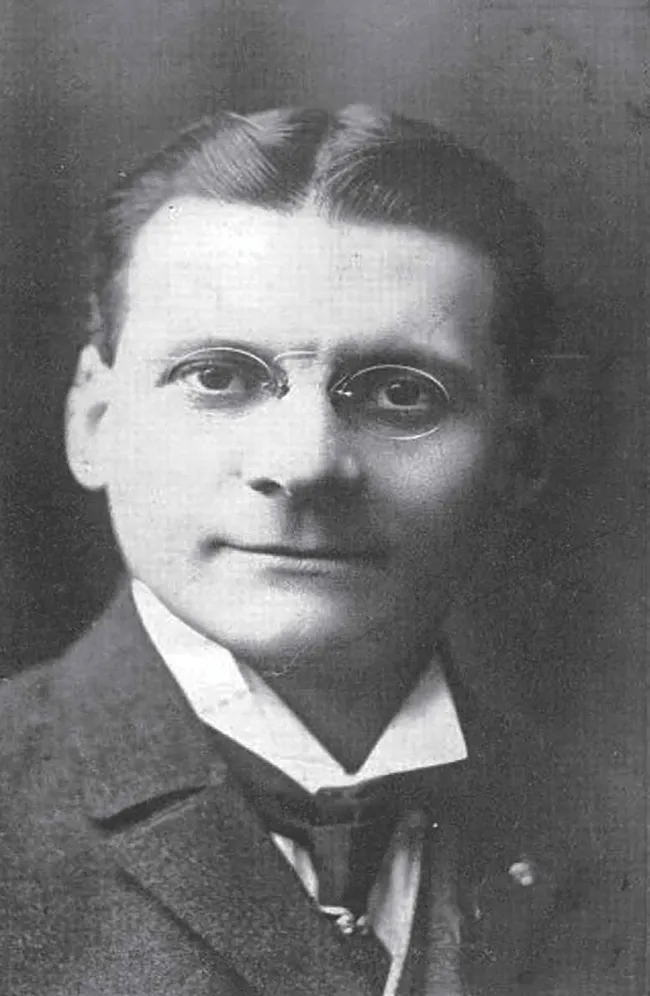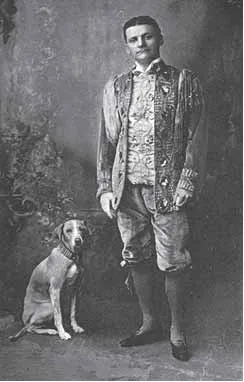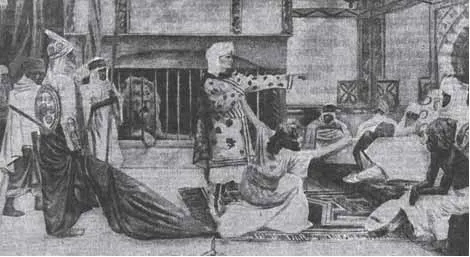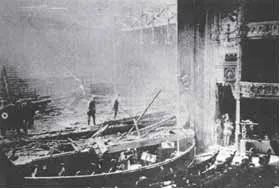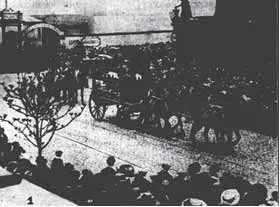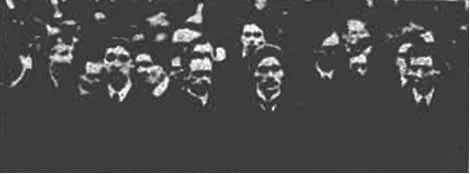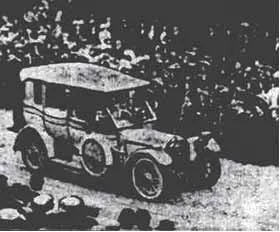![]()
Chapter One
The Great Lafayette
The Great Lafayette was born Sigmund Neuberger in Munich, Germany on 25 February 1871. In 1890, when he was 19 years old, his family emigrated to America. He began his career imitating the act of the Chinese magician, Ching Ling Foo.
He had previously worked in a bank barely making a living wage. He began his stage career as an amateur and left home with just £80 in savings, determined to make a music hall career for himself. His parents had predicted that he would be home within the month without a penny in his pocket. He secured his first engagement at Spokane Falls at a fee of $2 a week. When he asked for this to be increased to $10, he was promptly refused. He told his manager that one day he would make him pay the biggest fee in his record. A few years later, he refused a fee of $250 in the same house. In New Orleans, he managed to save $1,000 and this proved to be the great starting point of his brilliant career. Chicago was the first big city he took by storm followed by New York where, in 1905, he received $5,000 for a twenty three weeks’ engagement.
The Great Lafayette dressed for his stage performance.
By 1909, Lafayette was touring Great Britain and proved immensely popular. The Burnley Gazette of Saturday, 22 May 1909 noted:
The Great Lafayette has been engaged at an enormous expense to appear at the Burnley Palace Theatre and Hippodrome next week and the management are assured of a crowded house each night. The first series of feats is christened a carnival of conjuring and contains beautiful transformations and substitutions, reincarnating ‘Beauty’ from a painting. The plot, actually performed, revolves around a sleepy sculptor working at a model of ‘Leda and the Swan.’ The spirit of evil descends and the sculptor imagines a lump of clay is playing a lute and finally arouses and finishes his work. He sees the statue surrounded with cascades of falling waters of the Fountain of the Isis, sparkling with kaleidoscopic radiance, and then the statue actually comes to life.
Burnley people are in for a great treat and will pack the house every evening and at the matinee on Tuesday.
An advert for the Great Lafayette’s appearance at the Palace and Hippodrome at Burnley during May 1909. The show was so popular that he was engaged to appear for a further six nights. The performance featured ‘The Lion’s Den’, an act he was performing when he was tragically killed on stage.
In May 1910, the Great Lafayette was engaged at the Hackney Empire for the holiday season. He was said to have been their most important music hall engagement for ‘some time past’. It was said that he could catch pigeons in mid-air as if they had apparently materialised from nowhere, could reincarnate his pet-dog, Beauty, and evolved human beings from space, while proclaiming to be one of the greatest mystery makers ever known. His programme of clever illusions was apparently unlimited with the most effective item being ‘The Sculptor’s Dream’. The versatility of Lafayette was as remarkable as his performances were clever and, at the conclusion of the turn, several excruciatingly funny travesties on modern musical conductors were given. At the conclusion of the show, the ‘1912 Overture’ was played by the band, and was presented with all the realism and unexpected effects that had made the name of Lafayette preeminent amongst the entertainers of the day.
An advert announcing the arrival of the Great Lafayette at the Palace and Hippodrome in Burnley in May 1909.
To support Lafayette, there was a strong company of star artistes, including some of the most popular turns on the variety stage at the time. These included the Andos Japs, wonderful acrobats, jugglers, and equilibrists; Ed E Ford, the Australian Sundowner; New Macs, comedians and patterers; The Dandies and the Miles-Stavordale Quintette, who were described as ‘expert banjoists’.
Lafayette’s shows, including elaborate illusions, were incredibly popular earning him approximately £44,000 a year, the equivalent to about £3.6 million today, making him the most highly paid entertainer of his time.
The Great Lafayette pictured with his dogs.
Lafayette’s act included his beloved dog, Beauty, which had been given to him by his friend, Harry Houdini, and travelled with him everywhere. A sign on Lafayette’s London home read, ‘You may drink my wine; you may eat my food; you may command my servants; but you must respect my dog.’
In the Portsmouth Evening News of Monday, 27 March 1911, the Great Lafayette was billed as ‘The Man of Mystery’. Acts in his show included the reincarnation of his dog, Beauty, ‘The Mysterious Bathroom’, ‘Production of Human Beings from Nowhere’, ‘The Sculptor’s Dream’, ‘From Dust to Dust’, ‘Travesty Band’ and the ‘Great Music War Drama 1912’.
The Great Lafayette with his beloved dog, Beauty. The dog was given to him by his friend, Harry Houdini.
Tragedy struck while Lafayette was playing at the Empire Music Hall in Edinburgh.
He arrived in the city on 30 April 1911 with his dog, Beauty. A day after arriving at the Caledonian Hotel, Beauty died of a stroke. Lafayette was inconsolable. Lafayette announced that his own death wouldn’t be far off. He insisted that the dog would have a human burial but was told that the only way that that would happen was if it was buried in the grave of its owner. He bought a plot for himself at Piersfield Cemetery and arranged for Beauty to be buried there on 10 May.
A picture of the Great Lafayette which appeared in the London Daily News of Thursday, 11 May 1911.
On the evening of 9 May, at 11pm, the Great Lafayette was on stage, performing before an audience of 3,000. He was performing an illusion called ‘The Lion’s Bride’ which involved a real lion on stage. As the lion roared, a lantern caught fire on the elaborate set. An asbestos fire blanket was brought down. Panic was averted by the conductor who instructed his orchestra to play the National Anthem. This meant that everyone stood up and were quickly ushered to safety.
The stage at the Empire Palace Music Hall where the disastrous fire took place.
A portrait shot of the Great Lafayette.
The Great Lafayette on stage with his dog, Beauty.
The Great Lafayette’s troupe performing the illusion ‘The Lion’s Den’ on stage during 1911.
An advert from the Portsmouth Evening News of Monday, 27 March 1911 announcing the appearance of the Great Lafayette at the King’s Theatre.
The remains of the Empire Music Hall in Edinburgh after the tragic fire that killed the Great Lafayette in May 1911.
Thousands of spectators watched the procession as the Great Lafayette’s remains were taken to Piershill Cemetery.
The members of the Great Lafayette’s company entering the cemetery.
Behind the curtain, there was panic as the policy of the theatre was that all exits should be locked. There was nowhere to go and several artistes on stage lost their lives. It was reported, at the time, that Lafayette had made it out onto the street but had gone back in to save the lives of both the lion and a black stallion still on stage. This story was later disputed and it was thought that he’d never left the theatre. However, he wasn’t seen alive again.
Lafayette’s car with two members of his troupe standing at the back.
At 5am the next morning, a charred body wearing Lafayette’s pasha costume was found beside the dead lion and horse. Two other bodies were recovered which, at the time, were believed to be children but were actually those of two midgets taking part in the show.
The funeral of the Great Lafayette. The cortège can be seen entering Piershill Cemetery in Edinburgh. Thousands of people turned up to pay their respects.
The following day, Lafayette’s solicitor arrived in Edinburgh and voiced concern that the body found wasn’t wearing Lafayette’s ostentatious rings. However, the body was taken to Glasgow in preparation of the funeral. Three days later, a workman sifting through the rubble found a severed papier-mâché hand which pointed to the spot where an overlooked body lay. The body, adorned with rings, was later identified as Lafayette.
The funeral of the Great Lafayette took place on Sunday, 14 May. Houdini sent a wreath in the shape of the head of his dog, Beauty. The event was covered in the Fife Free Press and Kirkcaldy Guardian of Saturday, 20 May 1911:
The funeral of the chief victim of the Edinburgh Empire Theatre disaster, Sigmund Neuburger, known throughout the music-hall world as ‘The Great Lafayette’ took place on Sunday afternoon to Piershill Cemetery, Edinburgh, in the eastern side of the city. The terrible nature of the disaster with its toll of human life, the mysterious personality of the dead illusionist with that compound of Oriental fatalism which showed itself in his actings prior to the occurrence, and the extraordinary turn of events whereby even in death and cremation illusion should linger, all went to provide elements that invested the funeral rites with peculiar interest. Huge crowds lined the route from Morrison Street to the cemetery, a distance of over two miles and the ordinary car and vehicular traffic was suspended.
The urn containing the remains of the ‘Man of Mystery’ was a massive oak urn, with a raised three-tier canopy lid. It bore the following inscription on a silver plate: ‘The Great Lafayette, who perished in the Empire Palace fire, May 9, 1911.’ The urn was lined with lead inside, hermetically sealed. After being deposited in the funeral car, a purple velvet pall on which was worked a white silk cross, hid it from view. It was in keeping with the express desire of the illusionist that the casket containing his ashes should be laid in the vault beside that of his favourite dog ‘Beauty’, and great care was taken in the selection of the urn that it should conform to a size that ...


